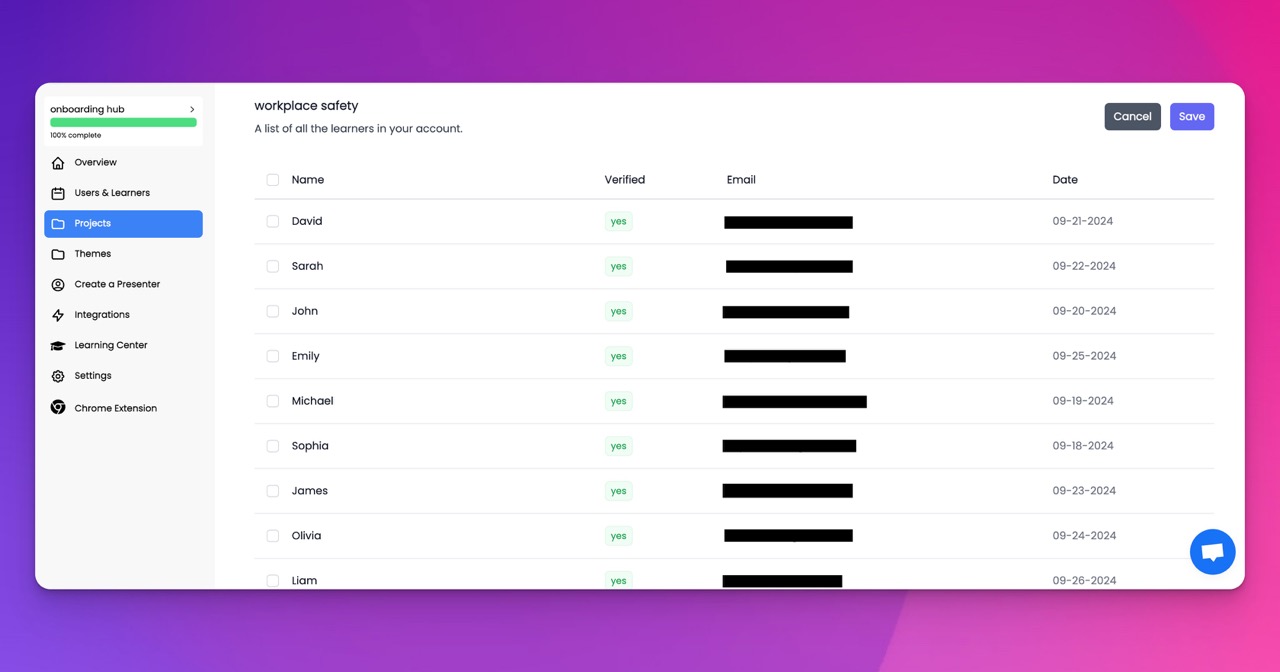🎉 Trainday now integrates with Zendesk and Hubspot 🎉 Trainday now integrates with Zendesk and Hubspot 🎉 Trainday now integrates with Zendesk and Hubspot
🎉 Trainday now integrates with Zendesk and Hubspot
🎉 Trainday now integrates with Zendesk and Hubspot
Contact
Redefining Restaurant Service and Training with Technology
In the ever-evolving restaurant industry, technology is playing a pivotal role in redefining both service delivery and staff training. From digital ordering systems to advanced training modules, technological advancements are not just enhancing the customer dining experience but also revolutionizing how restaurant staff are trained and developed. This blog post explores the myriad ways in which technology is reshaping the landscape of restaurant service and training, offering insights into how establishments can leverage these tools for improved efficiency, customer satisfaction, and employee skill enhancement.
Revolutionizing Service with Tech Innovations
Technology is transforming the way restaurants serve their customers, making dining experiences more seamless, personalized, and efficient.
Digital Ordering Systems: From kiosks to mobile apps, digital ordering systems streamline the ordering process, reducing wait times and human error.
Tablet-Based Menus: Tablets allow for dynamic menu presentations and can provide recommendations based on customer preferences or dietary restrictions.
Contactless Payments: These systems expedite the payment process and enhance customer convenience and safety.
Enhancing Training Through Technology
The integration of technology in training programs is significantly improving the way restaurant staff learn and develop their skills.
E-Learning Platforms: Online training platforms offer flexible, accessible learning opportunities for staff, enabling them to train at their own pace.
Interactive Simulations: Simulations and virtual reality environments provide staff with realistic scenarios for practice, from managing busy service periods to handling customer complaints.
Improving Communication and Coordination
Technology facilitates better communication and coordination among restaurant staff, leading to more efficient operations.
Integrated POS Systems: Point-of-sale systems that communicate orders directly to the kitchen reduce mistakes and enhance the speed of service.
Staff Scheduling Software: These tools help manage staff schedules more effectively, ensuring optimal coverage during peak hours.
Leveraging Data for Personalized Service
Restaurants can use customer data gathered through technology to personalize service and enhance customer experiences.
Customer Preference Tracking: Technology can track individual customer preferences, allowing restaurants to offer personalized service and menu suggestions.
Feedback and Review Analysis: Analyzing customer feedback through digital platforms can provide insights into service strengths and areas for improvement.
Challenges in Technology Adoption
While the benefits are significant, restaurants face challenges in adopting and integrating new technologies.
Training Staff: Ensuring staff are adequately trained and comfortable with new technologies is essential for seamless implementation.
Balancing Tech and Human Touch: Restaurants need to balance technological efficiency with the personal touch that is central to the dining experience.
Conclusion
Technology is redefining restaurant service and training, offering tools for enhanced efficiency, personalized customer service, and comprehensive staff development. As the restaurant industry continues to adapt and grow, embracing these technological advancements is crucial for staying competitive and meeting the changing needs of both customers and staff. In this digital age, technology in restaurants is not just about innovation; it's about creating a more dynamic, efficient, and satisfying dining and working experience.
Accelerate Compliance.
Deliver OSHA-Ready Courses Instantly.
Empower your team with data-driven training solutions tailored to your industry's safety standards. Stay compliant, reduce risks, and boost productivity with AI-powered course creation.
